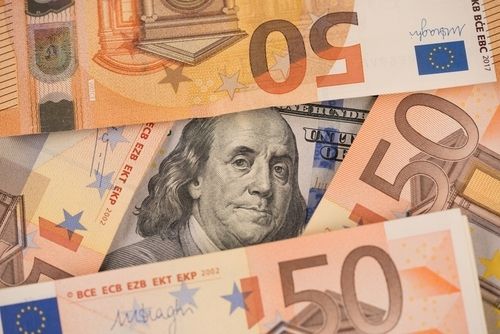EUR/USD gathers strength above 1.1100, Eurozone inflation data and Fed rate decision in focus

EUR/USD gains traction near 1.1125 in Wednesday’s Asian session.
The Fed is widely expected to reduce the benchmark overnight interest rate on Wednesday.
Investors await the Eurozone HICP data, which is expected to show an increase of 2.2% YoY in August.
The EUR/USD pair trades on a stronger note around 1.1125 during the Asian trading hours on Wednesday. The rising expectation of the US Federal Reserve (Fed) deeper rate cut provides some support to the major pair. The Eurozone Harmonized Index of Consumer Prices (HICP) data and the Fed monetary policy meeting will be the highlights on Wednesday.
The markets have remained split on whether the Fed should cut interest rates by 25 or 50 basis points (bps). Futures on the Fed funds rate have priced in nearly 60% odds of a 50 bps rate cut by the Fed at its September meeting on Wednesday, up from 45% last Friday, according to the LSEG.
Boris Kovacevic, global macro strategist at Convera in Vienna, said, "If they go 50, there is a chance that the Fed has some information that investors don't have and that recession risks are more likely than currently anticipated and priced in."
The US Retail Sales unexpectedly rose 0.1% MoM in August versus 1.1% prior, better than the expectation of -0.2%, the US Census Bureau showed Tuesday. Meanwhile, Industrial Production jumped 0.8% MoM in August, compared to a decline of 0.6% in July, above the consensus of 0.2%.
Less dovish interest rate guidance from European Central Bank (ECB) officials underpins the Euro (EUR) against the USD. ECB policymakers emphasized that the central bank will remain data-dependent when it comes to making future monetary policy decisions.
Investors will monitor the Eurozone HICP inflation data, which is due later on Wednesday. The headline HICP is expected to show an increase of 2.2% YoY in August, while the core HICP is estimated to show a rise of 2.8% in the same period.
Euro FAQs
The Euro is the currency for the 20 European Union countries that belong to the Eurozone. It is the second most heavily traded currency in the world behind the US Dollar. In 2022, it accounted for 31% of all foreign exchange transactions, with an average daily turnover of over $2.2 trillion a day. EUR/USD is the most heavily traded currency pair in the world, accounting for an estimated 30% off all transactions, followed by EUR/JPY (4%), EUR/GBP (3%) and EUR/AUD (2%).
The European Central Bank (ECB) in Frankfurt, Germany, is the reserve bank for the Eurozone. The ECB sets interest rates and manages monetary policy. The ECB’s primary mandate is to maintain price stability, which means either controlling inflation or stimulating growth. Its primary tool is the raising or lowering of interest rates. Relatively high interest rates – or the expectation of higher rates – will usually benefit the Euro and vice versa. The ECB Governing Council makes monetary policy decisions at meetings held eight times a year. Decisions are made by heads of the Eurozone national banks and six permanent members, including the President of the ECB, Christine Lagarde.
Eurozone inflation data, measured by the Harmonized Index of Consumer Prices (HICP), is an important econometric for the Euro. If inflation rises more than expected, especially if above the ECB’s 2% target, it obliges the ECB to raise interest rates to bring it back under control. Relatively high interest rates compared to its counterparts will usually benefit the Euro, as it makes the region more attractive as a place for global investors to park their money.
Data releases gauge the health of the economy and can impact on the Euro. Indicators such as GDP, Manufacturing and Services PMIs, employment, and consumer sentiment surveys can all influence the direction of the single currency. A strong economy is good for the Euro. Not only does it attract more foreign investment but it may encourage the ECB to put up interest rates, which will directly strengthen the Euro. Otherwise, if economic data is weak, the Euro is likely to fall. Economic data for the four largest economies in the euro area (Germany, France, Italy and Spain) are especially significant, as they account for 75% of the Eurozone’s economy.
Another significant data release for the Euro is the Trade Balance. This indicator measures the difference between what a country earns from its exports and what it spends on imports over a given period. If a country produces highly sought after exports then its currency will gain in value purely from the extra demand created from foreign buyers seeking to purchase these goods. Therefore, a positive net Trade Balance strengthens a currency and vice versa for a negative balance.
* The content presented above, whether from a third party or not, is considered as general advice only. This article should not be construed as containing investment advice, investment recommendations, an offer of or solicitation for any transactions in financial instruments.



